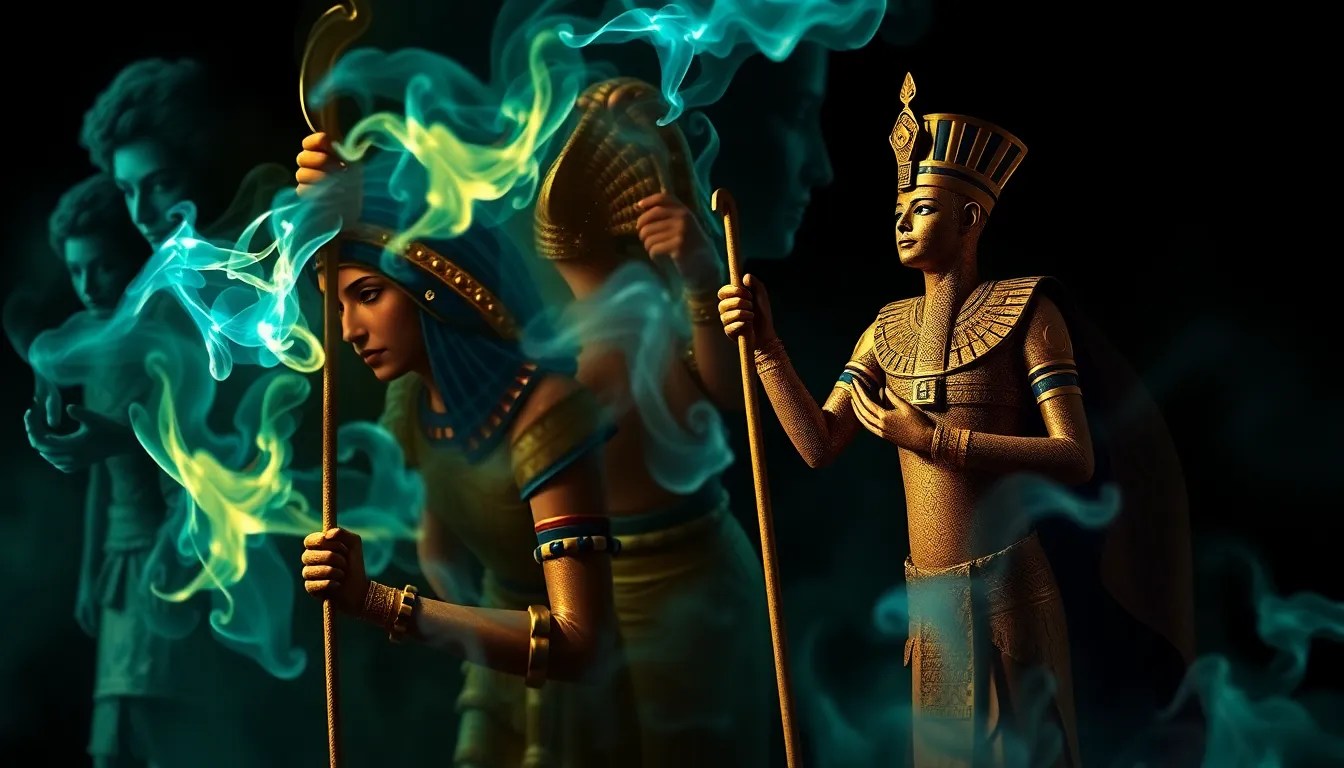From Lovers to Enemies: The Transformative Power of Deity Relationships
I. Introduction
The relationships among deities have long captivated the imagination of cultures worldwide. These divine connections often mirror human experiences, encompassing themes of love, betrayal, conflict, and resolution. The significance of such relationships extends beyond mere storytelling, providing profound insights into human nature and societal values. In this article, we will explore how the dynamics of love and conflict among deities serve as a powerful lens through which we can understand transformation.
II. The Nature of Deity Relationships
Deity relationships can be defined as the interactions and emotional connections between gods and goddesses within various mythologies. These relationships often illustrate the complexity of emotions and motivations, reflecting the duality of love and rivalry.
- Examples of Deities:
- Greek: Zeus and Hera
- Hindu: Shiva and Parvati
- Norse: Loki and the Aesir
The dual aspects of love and rivalry among deities demonstrate how these interactions shape not only the divine narrative but also human understanding of interpersonal relationships. The conflicts faced by deities often symbolize the struggles humans encounter in their own lives, illustrating the complexities of love and enmity.
III. Historical Context of Deity Relationships
Throughout history, myths have showcased a plethora of passionate love stories between deities, often intertwined with intense conflicts. These narratives serve to reflect societal values and human emotions prevalent at the time.
- Ancient Myths:
- The tale of Orpheus and Eurydice in Greek mythology highlights the power of love and loss.
- The story of Isis and Osiris emphasizes loyalty and betrayal, illustrating the impact of divine relationships on the Egyptian worldview.
- Conflicts and Implications:
Conflicts between deities often led to significant consequences, influencing the fate of entire communities. For instance, the rivalry between the gods could result in natural disasters, wars, or the establishment of cultural practices.
- Evolution of Narratives:
Over time, these narratives have evolved to reflect changing attitudes toward love and conflict, revealing deeper truths about human nature and relationships.
IV. Case Studies: Iconic Deity Relationships
To explore the transformative power of deity relationships, we can examine several iconic examples from different mythologies:
- Greek Mythology: Zeus and Hera’s Tumultuous Partnership
The relationship between Zeus, the king of the gods, and Hera, his wife, is marked by infidelity and jealousy, illustrating the complexities of love and power dynamics.
- Hindu Mythology: The Relationship Between Shiva and Parvati
Shiva and Parvati’s relationship embodies the balance of love and devotion, demonstrating how unity can arise from duality.
- Norse Mythology: The Complex Ties Between Loki and the Aesir
Loki’s relationship with the Aesir gods oscillates between camaraderie and betrayal, emphasizing the unpredictable nature of relationships and the consequences of conflict.
V. The Psychological Implications of Deity Relationships
The narratives surrounding deity relationships offer valuable insights into human emotions and conflicts.
- Reflection of Human Emotions:
These stories mirror personal experiences, showcasing how love and enmity can coexist and influence personal growth.
- Role of Archetypes:
The archetypes represented by deities help individuals understand their own relationships, providing a framework for navigating complex emotions.
- Transformative Power:
Love and hatred can serve as catalysts for personal transformation, teaching valuable lessons about forgiveness, growth, and resilience.
VI. Deity Relationships in Modern Culture
In contemporary society, the representation of deities continues to thrive in literature, film, and art, demonstrating their enduring relevance.
- Literature and Film:
Modern adaptations of mythological tales often explore the themes of love and conflict, reflecting contemporary societal values and issues.
- Artistic Representations:
Visual arts frequently depict the intricate relationships between deities, emphasizing the emotional depth and complexity of these narratives.
- Ongoing Relevance:
The themes of love, conflict, and transformation remain pertinent in modern narratives, resonating with audiences on a personal level.
VII. Lessons Learned from the Transformative Power of Deity Relationships
The exploration of deity relationships reveals several key insights into human relationships:
- Insights into Human Relationships:
Mythology provides a rich tapestry through which we can examine our own relationships, unveiling the complexities of love and conflict.
- Importance of Conflict:
Conflict is not merely destructive; it can foster growth, understanding, and deeper connections.
- Embracing Duality:
Recognizing that love and enmity are integral parts of the human experience can lead to greater empathy and understanding in our personal lives.
VIII. Conclusion
In summary, the transformative power of deity relationships offers profound insights into the duality of love and conflict. These narratives not only reflect ancient beliefs but also resonate with modern experiences. By examining the dynamics of divine relationships, we can gain valuable lessons applicable to our own lives. As we reflect on these timeless stories, we are encouraged to embrace the complexities of our relationships, recognizing that both love and enmity can lead to personal growth and understanding.




